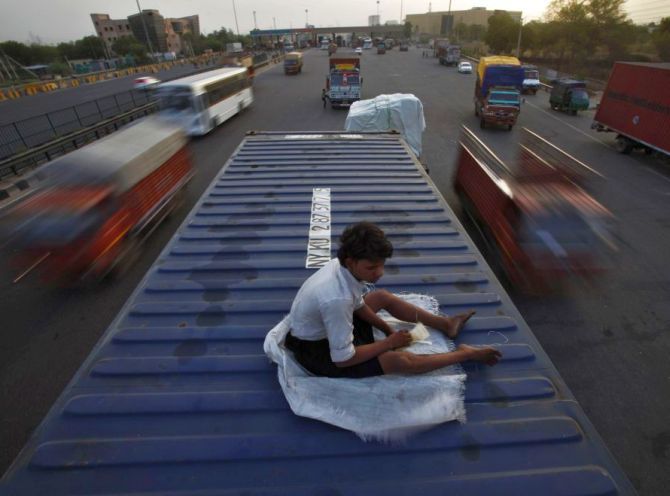 | « Back to article | Print this article |
Former prime minister Manmohan Singh said India is poised to take advantage of globalisation and engage in trade to finance its imports through exports.  Amid the government struggling to rein in the issue of twin deficits - of current account and fiscal deficits — despite the recent drop in global crude oil prices, former prime minister Manmohan Singh on Friday said the problem could be tackled with a more imaginative approach.
Amid the government struggling to rein in the issue of twin deficits - of current account and fiscal deficits — despite the recent drop in global crude oil prices, former prime minister Manmohan Singh on Friday said the problem could be tackled with a more imaginative approach.
“Fall in oil prices all over the world is the talk of the town. I would venture to think India is well placed to make better of this situation, provided we have the vision, provided we evolve into a meaningful national consensus to move ahead,” Singh said in his inaugural address at the Bharat Ram Memorial lecture in New Delhi.
The former prime minister said India’s balance of payments issue was now more manageable, with a decline in oil prices, and the fiscal deficit concern could be addressed more imaginatively.
The Centre’s fiscal deficit had touched almost 90 per cent of its Budget estimates for full 2014-15 in the first seven months itself, mainly due to low indirect tax collections and non-tax revenues.
Besides, India’s current account deficit widened to 2.1 per cent of gross domestic product in the September quarter of 2014-15, against 1.7 per cent in the first three months.
Singh, whose tenure as finance minister in the early 1990s had seen India embarking on economic reforms to tackle the balance of payments crisis, said the country was poised to take advantage of globalisation and engage in trade to finance its imports through exports.
“Today, we cannot grow in isolation... India is well placed to take advantage of this situation, provided we evolve a meaningful national consensus to move ahead,” he said. He, however, did not comment on the current policies to tackle the two deficits.
He said India could achieve a growth rate of eight to nine per cent if there was a “national consensus” on methods to take advantage of a globalised world.
“I think India has the opportunity to move towards a growth rate of six to seven per cent and to eight per cent thereafter, even as many other emerging economies are not doing very well,” Singh said.
Except India, other emerging economies — like Brazil, Russia and South Africa — were not doing well, Singh said, adding the country was set for a eight to nine per cent growth.
“We are working towards a growth rate of eight to nine per cent. There are opportunities, there are risks. India is currently at least poised to create a milieu in which its growth story can be another worthwhile chapter for the evolving global economies,” he said.
Indian economy had grown over nine per cent annually for three years before being affected by the global financial crisis of 2008-09. The growth rate had fallen to 6.7 per cent that year.
Though the economy recovered from those lows, with huge stimulus in the two years to follow, growth again fell to sub-five per cent in 2012-13 and 2013-14.
In the current financial year, the government estimates the growth rate to be between 5.4 per cent and 5.9 per cent.
Singh said a meaningful solution to India’s problems of poverty, ignorance and diseases could be found only in the framework of rapidly expanding economies.
“There is a broad consensus that we need a growth rate of eight to nine per cent to create 10-12 million jobs a year, if we have to conquer unemployment within our lifetime,” he said.